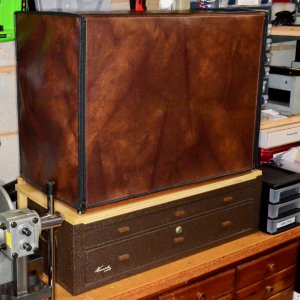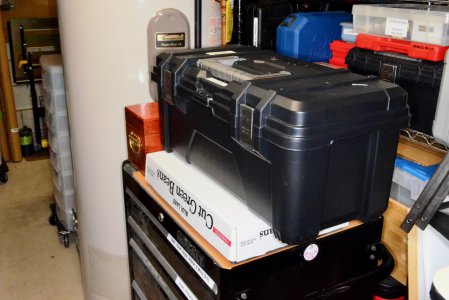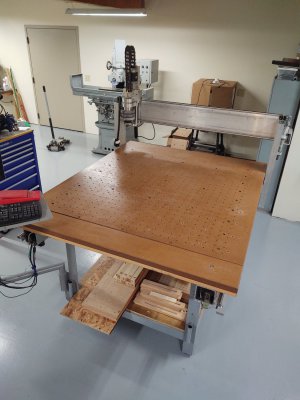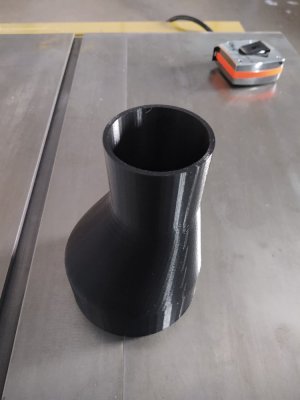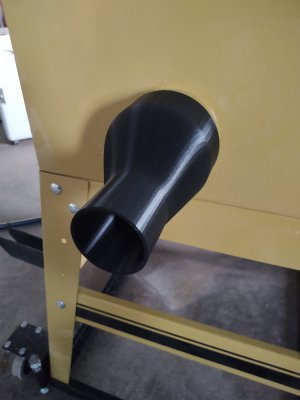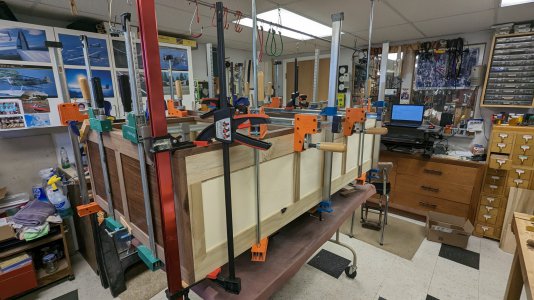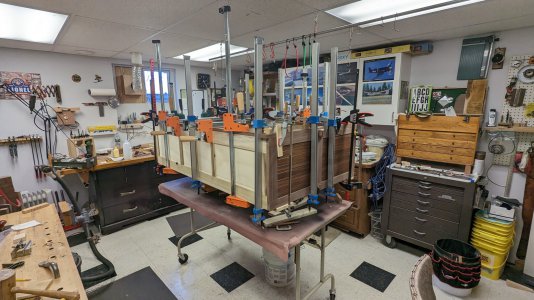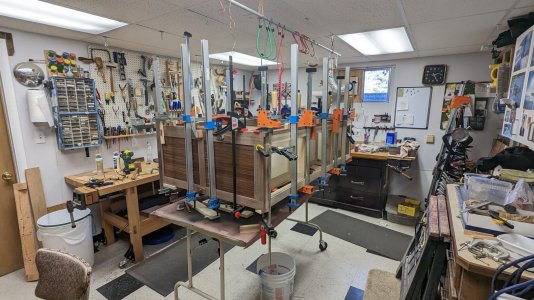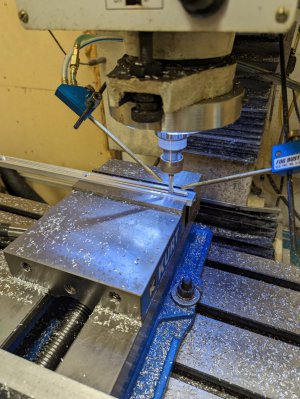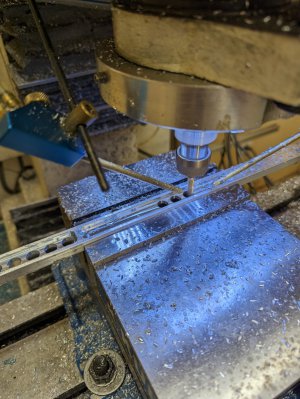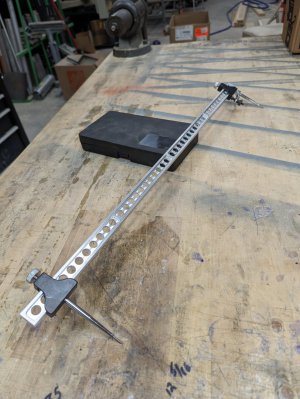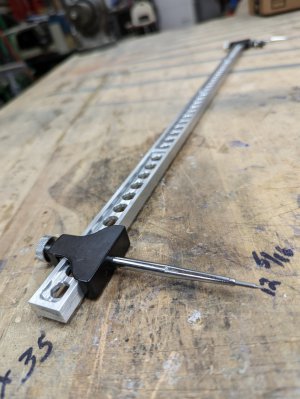More Tool Storage!
[This is to some extent "What Did You Buy?" and "What Did You Make," but mostly made]
I have been lamenting the lack of additional space in my small shop for more tool storage (walls full, floor – other than 24" max walkway around a central storage/utility core – occupied, no unused horizontal surfaces and with the exception of my 30 year old Gerstner 2613 tool chest everything is stacked to the practical limit (need to open the lids of the tool chests). I considered moving some of my least used tools into the under utilized tool storage in the garage, but while this would help my daily exercise it would be a pain. Then the light bulb went off (brain fart as one of my past coworkers would say): bring the unused storage from the garage into the basement shop! I rearranged storage in my Kennedy cart to free up a drawer, moved the contents from my 40 year old 28" Kennedy base into said drawer, cleaned up the base and I was ready . . . except the 26
13 Gerstner is 13" deep, and the Kennedy base is 9-1/2" deep.
However, I had run into a similar issue last year with a Craftsman chest on a used Kennedy base:
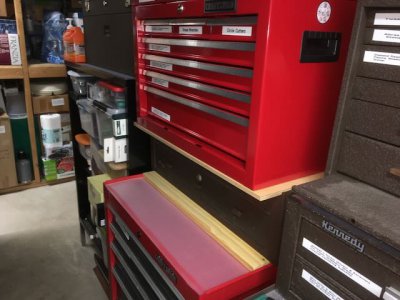
For this previous project, the Kennedy base was wider than the roller chest it was going to sit on, so I needed a spacer to position it above the flanges on the roller. I attached the base to the spacer so it wouldn't shift. While the Craftsman box is narrower than the base, it is deeper, so I made an extended top for the base. To preserve as much space as possible, and keep the back of the boxes away from the wall (covered with tools), the extension overhangs the front of the base, but allows good access to the drawers in the base. The chest is screwed down to the extension, and the extension is located between the back & side flanges on the top of the base, with saw kerfs under the front overhang to clear the front flanges.
For the Kennedy/Gerstner setup, since I had a little more room to work with I made some tweaks:
I purchased some 3/4" (yes, really 3/4"!) Poplar plywood on
Home Depot's website: a couple of bucks more than 23/32" Pine, with free shipping and pre-cut at the factory, which had to be more accurate than my 5-1/2" Craftsman C3 battery saw (or the well-meaning staff at HD) so I ordered it. A box arrived in three days, panels cut to exact sizes and just needing light sanding to be ready for finishing: I have found a new source for project plywood, delivered to my front door! This is what I made:
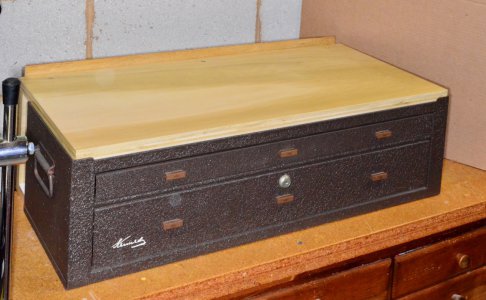
A top extension, with a rear support and backstop for the Gerstner chest.
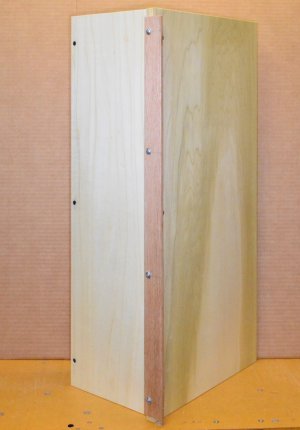
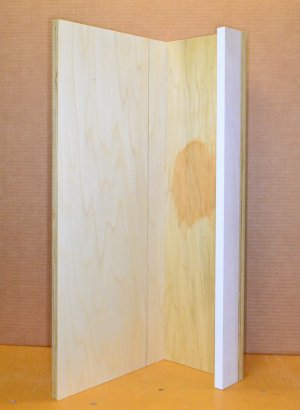
The extension fits within the side flanges of the base, there's a saw kerf to accept the back flange, and a return at the bottom of the back support that touches the bottom of the Kennedy base so I can push the assembly up against the backstop I had previously placed on the re-purposed, 60 year old pine chest the Gerstner has lived on. The brown-ish area on the inside of the support is where I tested some Minwax One-Step Stain/Poly I had (where no one would see it), but the color wasn't right and it raised the grain; I ended up using Minwax One Coat Satin Poly on all surfaces, which is my go-to when all I'm looking for is something to protect the wood.
Here's the final result:
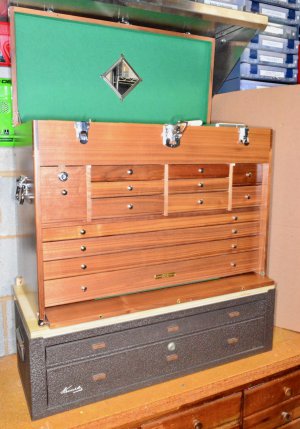
It's a tight fit under the SS shelf, but it works and I've got 432 sq.in. of more tool storage (or 3 sq.ft., which doesn't sound like as much).
How do I keep my decades old toolboxes looking so good? Well, I was taught from an early age to take care of my possessions so they don't get knocked about; and in the case of the Gerstner (which I bought as a home for the carving & miscellaneous small tools I inherited when my Father passed), I keep him protected:
